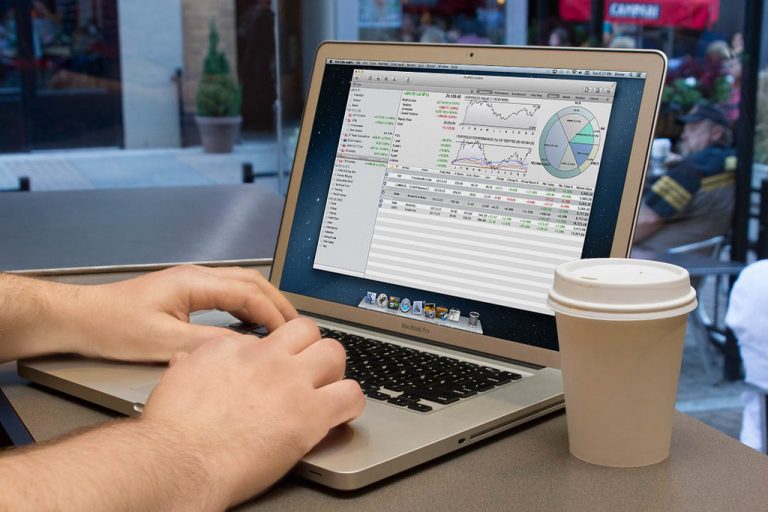The stock market has always been described as somewhat irrational, but the years 2020 and 2021 took the rollercoaster to new heights. The March crash in 2020 was vast, falling by over a third, yet it took an immediate V-Shaped recovery, something many of us have never witnessed.
This has made people very concerned, confused, and seeking potential low-risk investments to help protect themselves from ongoing irrationality.
It was so unique that many analysts claimed it wasn’t a proper crash. By the end of 2020, the Dow Jones hit an All-Time High. With Russia-Ukraine tensions still high, an energy and semiconductor crisis, as well as general supply issues alongside Brexit, it’s understandable why analysts are forecasting 2022 to be volatile.
Inflation is sky-high, the commodity super-cycle commences, and interest rates have risen, yet we’re still expecting vast growth and a massive crash. On the other hand, the trading platform’s official site is the kind of platform that allows the users to register advancements in the scenario just by providing compelling guidance and insights into the ever-expanding network.
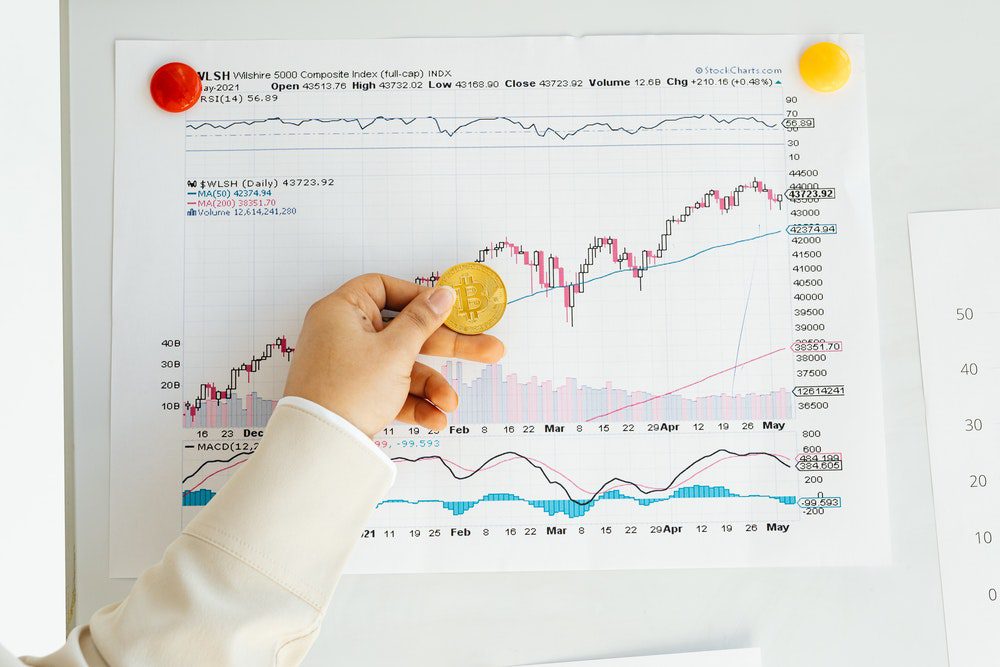
- Why bother? Can you predict a crash?
- The four types of low-risk investments
- Investing in stocks during a market downturn: risk assessment tools
- Specific low-risk investing recommendations for 2022
4.1. Cash as an inflation hedge?
4.2. Best dividend ETFs & stocks to own in 2022
4.3. Best commodities to own in 2022
4.4. Best staple stocks to own in 2022
4.5. Real estate and tangible assets
- Summary for low-risk investments in 2022
Why Bother? Can You Predict a Crash?
Though a crash, or even volatility, cannot be predicted, we can hedge against its risk. Many will want to continue holding high-risk assets like tech growth stocks and cryptocurrency, despite their recent correction, which is fine – but it may be wise to dedicate a portion of the portfolio to lower-risk investments that will fare better during dips and prevent your portfolio from falling too much.
Remember that it’s the investor’s peril to see a decline in their portfolio and sell at the bottom! If you were to diversify your portfolio, the swings would be less noticeable, and some (low-risk) assets can counterbalance the high-risk investments.

The Four Types of Low-Risk Investments
Below are a select few low-risk investments as per “professional literature.” Knowing the “plain-vanilla” recommendations for careful investors is essential before delving into specific low-risk investing recommendations in 2022.
Value Investing
It’s commonly argued that growth stocks cause our “overpriced” stock market, with some companies having many decades of future cash flow factoring into their valuation. Thus, if such a crash were to happen, it wouldn’t be implausible to assume it would be somewhat of a tech-stock crisis, as these are the stocks currently priced at way above their intrinsic value.
They were also the ones to dip during Black Monday in March dramatically. Very recently, in January 2022, tech stocks and crypto crashed, while large-cap value stocks remained relatively stable.
Value investing is thus a great antidote to tech/growth bubbles. When crypto crashed, cynical, sarcastic comments came out of the woodwork, such as “the market is overreacting; wait until they release their solid financials.” Of course, crypto has no profits to report.
Value investing is about taking the time to assess the actual intrinsic value of a company so that this will help the company stand firm in the face of market adversity. Warren Buffet once said, “Only when the tide goes out do you discover who’s been swimming naked?”
Bonds
Both corporate and government bonds are a form of loan lending that holds relatively little risk – particularly the latter.
With the recent interest rate rise and potential future rises, corporate bonds may not perform well because investors have alternatives in treasury bonds. Sealants are highly likely to outperform equities during a crash and are sometimes negatively correlated, making them an excellent hedging investment.
If we continue to see growth and inflation, however, some may be concerned with the idea that bonds will be beaten by inflation, making them a poor investment. There is an alternative way of looking at this, though.
As mentioned above, the growth stocks take into account decades of future cash flow, which means that much of their value is jeopardized by inflation. Thus, the more years of future income we factor into their current price, the more their value is harmed by years of inflation.
Having a portfolio of only bonds would be a mistake, but there is no reason bonds can’t offer some diversification and numbing of volatility. The down-trending market rule of thumb recommends a 60/40 split (stocks/bonds).

Dividend Stocks
Dividend stocks often tie into value investing because dividend stocks are generally highly established companies with a large cap that have a solid track record of paying dividends. Furthermore, tips result in an income during what could be a turbulent time, potentially paying out dividends even during a worst-case scenario crisis. In search of dividend reliability, keep an eye on the dividend aristocrats of Canada.
It doesn’t mean that all dividend stocks are underpriced, unlike value investing’s proposition, but many have an air of “too big to fail” along with reliability. Plus, during an economic recession or crash, dividend stocks can help us remain solvent without having to sell our investments during a crash.
So, we get the benefit of extra income support during a time of low job security – without selling our equity investment, which is deeply underpriced.
Combining the above: Low-Risk Funds
Low-risk funds produce some of the best returns because they’re effectively created to benefit from diversified risk while still being exposed to market growth. For example, Vanguard has a selection of Lifestrategy funds which cater to people of varying risk levels.
Their 40% equities and 60% bonds funds can capture strong returns during a boom – of which we may see a continued bull market for a long time – but the 60% bonds cover us very well during a crash.
It’s not just the bonds that are an excellent proposition; they invest in thousands of companies worldwide. Thus, even if the US and UK stocks crash, investments in other European and Asian companies will still be investments. Vanguard generally diversifies not just geographically but between industries and market capitalization as well.
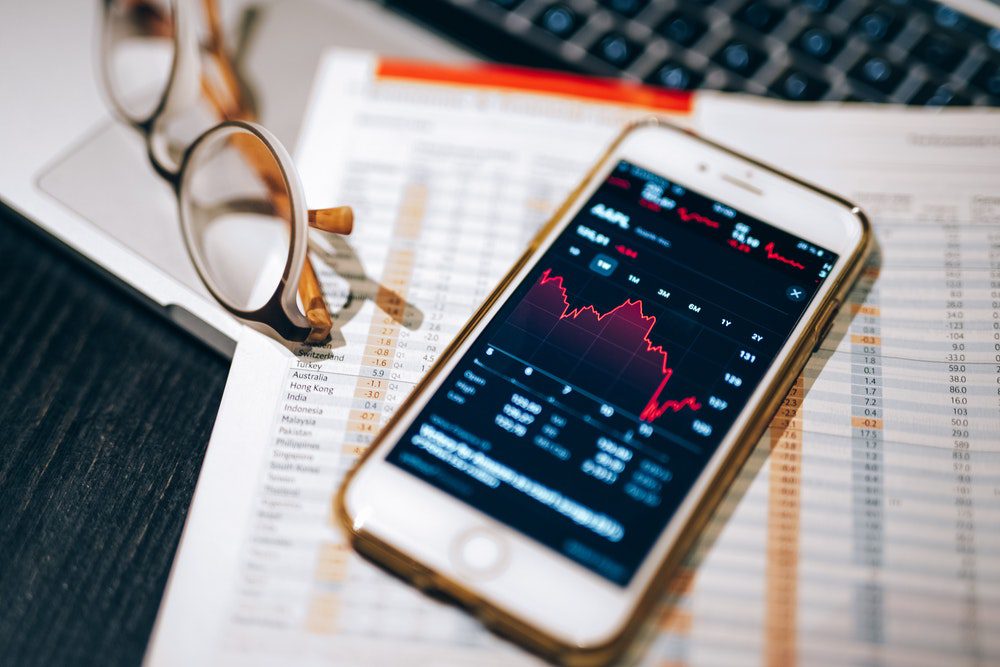
Investing in Stocks During a Market Downturn: Risk Assessment Tools
There are a few things to consider when looking at the risk level of a particular store or ETF:
Volatility
We can read about the forecasted volatility of a new investment, but we can also check its Beta. The Beta number will represent how volatile it has historically been about its competitors/the sector. Anything over 1 means it’s more volatile than the industry average.
Portfolio Context
We need to ensure that the new investment fits well with other investments in our portfolio – and by fits well, we do not mean shares similarities. Quite the opposite, we are looking for negative correlations between the new asset and the portfolio’s other assets, so we are not exposed to systemic risk.
Time frame
The timeframe is a considerable aspect of weighing up risk. Investing in the market index, for example, is considered risky. There could be a recession tomorrow, next month, or next year. However, if we extend the time horizon for this investment, the risk decreases. Generally, markets do not take longer than 5 or so years to recover (though there are exceptions).
Thus, a 30-year investing time frame could afford the risk of index investing, while a 4-year investing time frame could not. The closer we get to the end of our time horizon, the more we want to weigh our portfolio towards low-risk investments like bonds.
Specific Low-Risk Investing Recommendations During Inflation
Now that we know the standard recommendations for when the stock market is underperforming, let’s think of low-risk investments for 2022 when unique circumstances are mentioned at the article’s beginning.
First and foremost, the most significant risk to the stock markets is inflation – whether the Fed’s hawkish actions can contain it. On March 16, the Fed announced the first interest rate increase and signaled a bump in the rate six times during the year, i.e., by the end of the year, the interest rate will surpass 2%.
The second risk to the markets is how high everything went during the COVID period, with the market being pushed significantly by retail investors or “stupid money” – this aspect has grown tremendously during the pandemic, fueled by people staying at home and having free time, free money as a result of government support (or simply less spending); and, of course, day trading platforms, which allow users to trade with minimal extra fees, high leverage, and owning fractional shares
Enabling even the smallest of traders, when they are en mass, to impact the markets. In hindsight, increased retailer investing resulted in a bubble affecting a variety of assets – particularly “meme stocks” and other stocks that quadrupled in price during COVID, only to crash back into reality at the end of 2021 / beginning of 2022. It is still unknown if this poses a systematic risk to the markets.

The third risk to the markets is the beginning of the aforementioned commodity super-cycle as a result of logistic difficulties, the Russia-Ukraine war and its aftermath in terms of imports, and fear of inflation leading investors to invest in commodities; there could be a vicious cycle created that will send commodities so high that manufacturers’ productivity will be disrupted to the extent that they can’t produce any further.
We’ve seen that in the semiconductor industry, Sony has been unable to deliver PlayStation 5 for more than 2 years, and it may expand throughout multiple industries and products.
The best way to decrease the risk level of one’s portfolio is to be fully diversified, and the other recommendation would be to lower the balance of growth assets in this period (which doesn’t necessarily mean eliminating it because – no one can predict the markets or when they would swing back up again). Below you can find some specific recommendations for low-risk investing in 2022. That doesn’t mean these investments don’t carry any risk at all.
Considering the current economic climate, they are, in our opinion, going to fare better than others. If our prediction is wrong, the downturn potential is lower than that of alternative investment vehicles.
Cash as an inflation hedge
Keeping some of your portfolios in cash in a period when the inflation rate is higher than it was in 30 years sounds counterintuitive, but it serves multiple purposes:
- When the interest rate rises high enough, you could deposit that money in a bank savings account and get a reasonable interest rate – the only genuinely risk-free option in the market.
- When the economic climate changes, you would have liquidity in hand and could invest based on the news. For example, if the inflation rate dwindling could mean fewer interest rate hikes and will undoubtedly have a positive impact on the markets.
- It’s not unreasonable to believe that in 2022 or certain parts of it, all assets will decline in tandem – stocks, bonds, real estate. So cash would be the only path toward a “positive” result.

The best dividend ETFs and stocks to own During Inflation
Dividend stocks of mega-corporations with deep pockets and an inflation-proof business could be an excellent place to park your money. You won’t be expecting exceptional results on that, but you will be netting a dividend, and these stocks will likely preserve or increase in value this year. Here are some examples of my favorite dividend stocks and ETFs to own for low-risk investing:
The Utilities Select Sector SPDR (XLU): the most significant utilities ETF investing in the largest utility companies in the U.S. with low fees and a dividend return of almost 3%.
Vanguard Materials (VAW): investing in the biggest U.S companies in the materials market with a very low expense rate.
Invesco Dynamic Energy Exploration & Production (PXE): returns of almost 80% over the past 12 months, with a more than 2% dividend, track the Dynamic Energy Exploration & Production segment globally.
Enbridge (ENB): Enbridge is a Canadian energy giant, offering a whopping 6% dividend yield. It is profitable, stable, and less risky – in my opinion) than American stocks at this point.
Canadian National Railway Company (CNI): Another Canadian stock that is solid on the financials and is under no real threat of inflation or otherwise, with a dividend yield of 1.8% in the past year.
Best commodities to own in 2022
As per most prominent investment banks, the commodity supercycle has begun, and commodities are expected to continue increasing. Our dividend ETFs and stock picks represent that already. Still, we would recommend direct investing in things, too, most notably gold, which is known to be the best inflation hedge – at least by historical performance.
Our list of the best commodities to own in 2022 includes:
- Gold
- Silver
- Copper
- Zinc
- Oil
Also, potentially, natural gas, wheat, and corn (due to the Russia-Ukraine war).
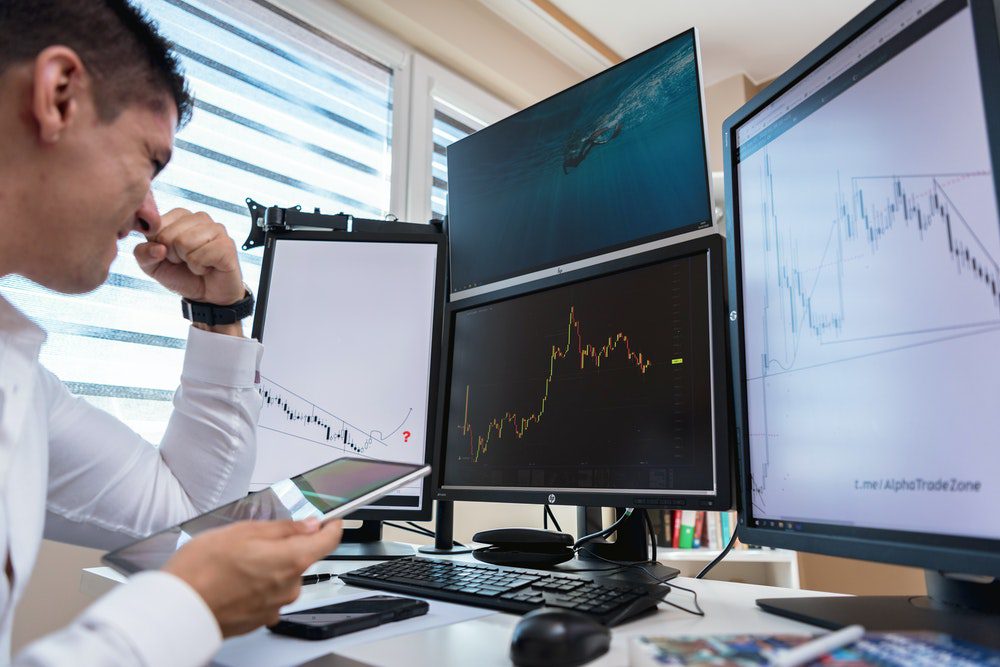
Sophisticated investors can invest in those commodities through Future contracts or future contract options. Most of these are significantly cheaper in terms of fees than investing in things via an ETF, but most retail investors don’t have direct access to those contracts (and the minimum contract size is high).
Alternatively, these are the best ETFs for commodities in 2022 below. We have selected three very diversified and smart funds that do their own fine-tuning in regards to the commodities they are investing in:
Invesco DB Commodity Index Tracking Fund (DBC): energy-heavy ETF with a large selection of all commodities, including corn and soybeans. Increased by more than 40% in the past 12 months.
First Trust Global Tactical Commodity Strategy Fund (FTGC): slightly more expensive ETF but actively managed by commodity specialists investing in the “right commodity.” Mostly metals like gold, copper, silver, and aluminum.
iPath Bloomberg Commodity Index Total Return ETN (DJP): another well-diversified commodity ETF.
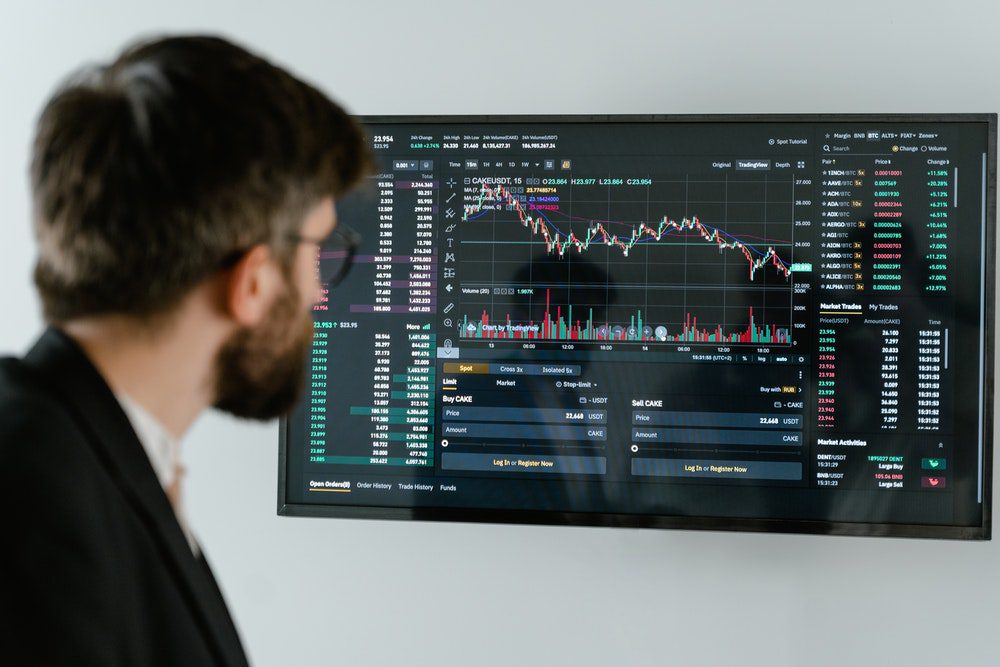
Best staple stocks to own in 2022
As we have mentioned multiple times in this guide, buying stocks isn’t mainly a part of a low-risk investment portfolio. Still, these are unusual times, and due to high inflation, money has to be invested SOMEWHERE. You should not have a portfolio that consists only of commodities or any other specific asset – instead, diversification is critical.
One form of low-risk stocks is dividend stocks that we touched on before, and another form of supplies could be stapled stocks – big companies that have enough cash to withstand anything, and their brand could potentially keep them inflation safe.
These are our top 10 favorite staple stocks to own in 2022:
- Google / Alphabet (GOOG)
- McDonald’s (MCD)
- Amazon (AMZN)
- Intuit (INTU)
- BMO (BMO)
- Bank of America (BAC)
- Coca-Cola (KO)
- BlackRock (BLK)
- Visa (V)
- 3M (MMM)
This list of low-risk stocks, as per our definition, focuses on companies whose products are necessary and will always remain critical. Whether inflation or recession, people need to eat, manage their banking, buy staple products for their homes, and they will most certainly continue to browse the internet and buy there.
They still need their Visa card to pay for necessities and will likely keep drinking Coca-Cola and eating at McDonald’s. This is how the world works – weaker brands get crashed, especially during turbulent times.

Real estate and tangible assets
Usually, real estate functions well when there’s a decline in the stock market. Real estate also works well during high inflation and recessions. 2022 is slightly different in that sense, and I’m not sure we can categorize real estate as a low-risk investment anymore due to how much property prices have gone up globally during the pandemic.
The real estate market went up in tandem with the stock market and has yet to see a slowdown or decline in most places. Still, there are already worrying signals coming from some global markets – the NZ market has seen prices slide during 2022, and – coupled with higher interest rates – there’s a concern that most global real estate markets are to follow.
The same goes for tangible assets. One primary “new” asset class, so to speak, that increased tremendously during the pandemic were collectibles. From sports cards to Pokemon to video games, more and more investors – especially crypto-investors who have made a fortune in previous years – have tapped into those collectibles and claimed they are inflation resistant.
This is not a wrong theory at all, but again – collectibles went up x3 or x4 as a rough average during the pandemic, with some specific titles going up as much as x100… It would be difficult to recommend anyone to buy into collectibles now and call that a low-risk investment.
Low-risk investments in 2022 summary
2022 is predicted to be volatile, and making bold predictions is a fool’s errand. The only way you can prepare yourself for a rough ride is by analyzing your portfolio and including some low-risk assets that perform better than the high-risk ones.
Low-risk investing in 2022 has changed some due to the unforeseeable circumstances leading to it – COVID, inflation, and war – but it does not mean that it’s impossible to lower your risk level and put money where it can retain its value and continue growing.
- Does Albertsons Take Google Pay? - July 5, 2025
- Cash Advance vs. Personal Loan: Which Is Better? - July 5, 2025
- Does Chipotle Take Google Pay? - July 5, 2025

